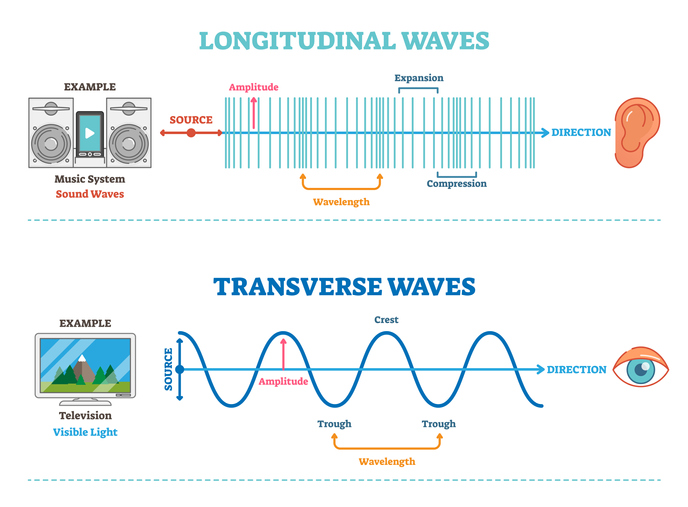Wave Motion and types of Waves
Wave MotionA wave is the transfer of energy and momentum, in form of disturbance, from one part of a medium to another without the actual transfer of particles of the medium from one point to anoth...

Stationary Waves
When two progressive waves of same amplitude and wavelength travelling along a straight line in opposite directions superimpose on each other, stationary waves are formed.
Derivation
Let us consider a progressive wave of amplitude a and wavelength λ travelling in the direction of X axis.
y1 = a sin 2π [t/T – x/λ] …... (1)
This wave is reflected from a free end and it travels in the negative direction of X axis, then
y2 = a sin 2π [t/T + x/λ] …... (2)
According to principle of superposition, the resultant displacement is,
 y = y1+y2
y = y1+y2
= a [sin 2π (t/T – x/λ) + sin 2π (t/T + x/λ)]
= a [2sin (2πt/T) cos (2πx/λ)]
So, y = 2a cos (2πx/λ) sin (2πt/T) …... (3)
This is the equation of a stationary wave.
(a) At points where x = 0, λ/2, λ, 3λ/2, the values of cos 2πx/λ = ±1
∴ A = + 2a. At these points the resultant amplitude is maximum. They are called antinodes as shown in figure.
(b) At points where x = λ/4, 3λ/4, 5λ/4..... the values of cos 2πx/λ = 0.
∴ A = 0. The resultant amplitude is zero at these points. They are called nodes.
The distance between any two successive antinodes or nodes is equal to λ/2 and the distance between an antinode and a node is λ/4.
(c) When t = 0, T/2, T, 3T/2, 2T,.... then sin 2πt/T = 0, the displacement is zero.
(d) When t = T/4, 3T/4, 5T/4 etc,....sin 2πt/T = ±1, the displacement is maximum.